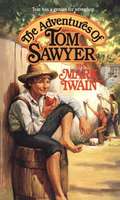- Table View
- List View
Through the Looking-Glass
by Lewis CarrollThis 1872 sequel to Lewis Carroll's beloved Alice's Adventures in Wonderland finds the inquisitive heroine in a fantastic land where everything is reversed. Looking-glass land, a topsy-turvy world lurking just behind the mirror over Alice's mantel, is a fantastic realm of live chessmen, madcap kings and queens, strange mythological creatures, talking flowers and puddings, and rude insects.
Book of Nonsense
by Edward LearThe owls, hen, larks, and their nests in his beard, are among the fey fauna and peculiar persons inhabiting the uniquely inspired nonsense rhymes and drawings of Lear (20th child of a London stockbroker), whose Book of Nonsense, first published in 1846, stands alone as the ultimate and most loved expression in English of freewheeling, benign, and unconstricted merriment.
The Old Peabody Pew
by Kate Douglas WigginThe Dorcas society of the little church has set its collective mind to the task of re-dressing the floors -- which means cleaning the pews, too -- and if they cannot have it done by Thanksgiving, why, then, let it be by Christmas. Nancy Wentworth, at thirty-five the most vivacious of them, with her youth undimmed by her work as teacher, throws herself into the work, even the dirty business of scrubbing. She begins to clean the Peabody Pew, which starts Mrs. Sargent into the subject of that worthless Peabody son, long missing. "I know there's a Peabody still alive and doing business in Detroit," Mrs. Burbank says then, "for I got his address a week ago, and I wrote asking if he would send a few dollars toward repairing the old church." Nancy turns her face to the wall and silently wipes at the paint of the wainscoting. The blood that has rushed into her cheeks at Mrs. Sargent's jeering reference to Justin Peabody still lingers there, for anyone at all to read.
The Adventures of Tom Sawyer
by Mark TwainMark Twain's classic story of a young boy's life in a small town on the Mississippi River. [This text is listed as an example that meets Common Core Standards in English language arts in grades 6-8 at http://www.corestandards.org.]
Sylvie and Bruno
by Lewis CarrollSylvia and Bruno, first published in 1889, forms the last novel Lewis Carroll published during his lifetime. The novel has two main plots; one set in the real world at the time the book was published (the Victorian era), the other in a fantasy world.
Indian Boyhood
by Charles EastmanCharles Eastman, or Hakadah, as his Sioux relatives and fellow tribesmen knew him, as a full-blooded Indian boy learned the reticent manners and stoical ways of patience and bravery expected of every young warrior in the 1870's and 1880's. The hunts, games, and ceremonies of his native tribe were all he knew of life until his father, who had spent time with the white man, came to find him. Indian Boyhood is Eastman's first-hand reminiscence of the life he led until he was fifteen with the nomadic Sioux. Left motherless at birth, he tells how his grandmother saved him from relatives who offered to care for him "until he died." It was that grandmother who sang him the traditional Indian lullabies which are meant to cultivate bravery in all male babies, who taught him not to cry at night (for fear of revealing the whereabouts of the Sioux camp to hostile tribes), and who first explained to him some of the skills he would need to survive as an adult in the wilds. Eastman remembers the uncle who taught him the skills of the hunt and the war-path, and how his day began at first light, when his uncle would startle him from sleep with a terrifying whoop, in response to which the young boy was expected to jump fully alert to his feet, and rush outside, bow in hand, returning the yell that had just awakened him. Yet all Indian life did not consist in training and discipline. In time of abundance and even in famine, Indian children had much time for sport and games of combat — races, lacrosse, and wrestling were all familiar to Eastman and his childhood friends. Here too are observations about Indian character, social custom, and morality. Eastman describes the traditional arrangements by which the tribe governed itself — its appointed police force, hunting and warrior scouts, and its tribal council, and how the tribe supported these officers with a kind of taxation. Eastman also includes family and tribal legends of adventure, bravery, and nature that he heard in the lodge of Smoky Day, the tribe historian. But Eastman's own memories of attacks by hostile tribes, flights from the white man's armies, and the dangers of the hunt rival the old legends in capturing a vision of life now long lost.

